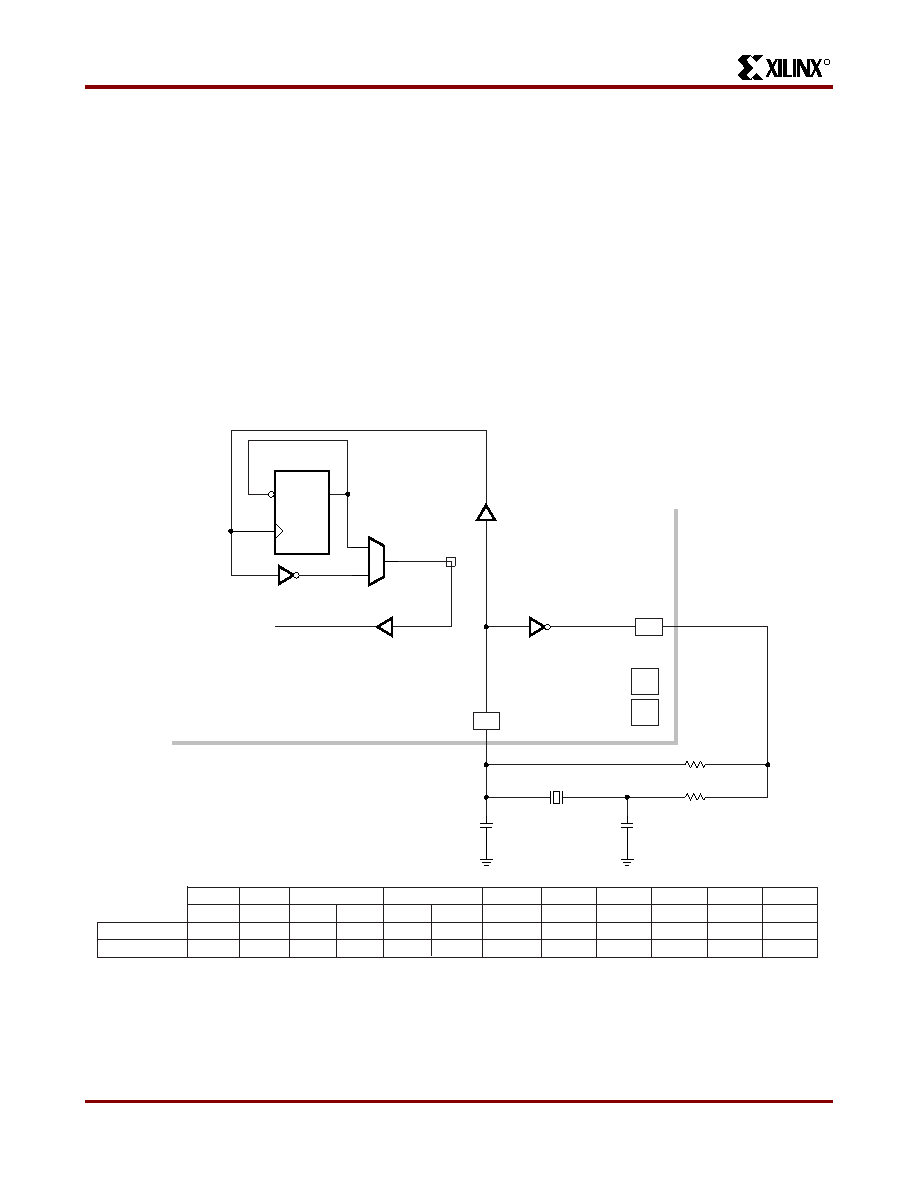- 您現(xiàn)在的位置:買(mǎi)賣(mài)IC網(wǎng) > PDF目錄4177 > XC3020A-7PC84C (Xilinx Inc)IC LOGIC CL ARRAY 2000GAT 84PLCC PDF資料下載
參數(shù)資料
| 型號(hào): | XC3020A-7PC84C |
| 廠商: | Xilinx Inc |
| 文件頁(yè)數(shù): | 8/76頁(yè) |
| 文件大小: | 0K |
| 描述: | IC LOGIC CL ARRAY 2000GAT 84PLCC |
| 產(chǎn)品變化通告: | Product Discontinuation 27/Apr/2010 |
| 標(biāo)準(zhǔn)包裝: | 1 |
| 系列: | XC3000A/L |
| LAB/CLB數(shù): | 64 |
| RAM 位總計(jì): | 14779 |
| 輸入/輸出數(shù): | 64 |
| 門(mén)數(shù): | 1500 |
| 電源電壓: | 4.75 V ~ 5.25 V |
| 安裝類(lèi)型: | 表面貼裝 |
| 工作溫度: | 0°C ~ 85°C |
| 封裝/外殼: | 84-LCC(J 形引線(xiàn)) |
| 供應(yīng)商設(shè)備封裝: | 84-PLCC |
| 其它名稱(chēng): | 122-1010 |
第1頁(yè)第2頁(yè)第3頁(yè)第4頁(yè)第5頁(yè)第6頁(yè)第7頁(yè)當(dāng)前第8頁(yè)第9頁(yè)第10頁(yè)第11頁(yè)第12頁(yè)第13頁(yè)第14頁(yè)第15頁(yè)第16頁(yè)第17頁(yè)第18頁(yè)第19頁(yè)第20頁(yè)第21頁(yè)第22頁(yè)第23頁(yè)第24頁(yè)第25頁(yè)第26頁(yè)第27頁(yè)第28頁(yè)第29頁(yè)第30頁(yè)第31頁(yè)第32頁(yè)第33頁(yè)第34頁(yè)第35頁(yè)第36頁(yè)第37頁(yè)第38頁(yè)第39頁(yè)第40頁(yè)第41頁(yè)第42頁(yè)第43頁(yè)第44頁(yè)第45頁(yè)第46頁(yè)第47頁(yè)第48頁(yè)第49頁(yè)第50頁(yè)第51頁(yè)第52頁(yè)第53頁(yè)第54頁(yè)第55頁(yè)第56頁(yè)第57頁(yè)第58頁(yè)第59頁(yè)第60頁(yè)第61頁(yè)第62頁(yè)第63頁(yè)第64頁(yè)第65頁(yè)第66頁(yè)第67頁(yè)第68頁(yè)第69頁(yè)第70頁(yè)第71頁(yè)第72頁(yè)第73頁(yè)第74頁(yè)第75頁(yè)第76頁(yè)

R
XC3000 Series Field Programmable Gate Arrays
7-18
November 9, 1998 (Version 3.1)
Crystal Oscillator
Figure 18 also shows the location of an internal high speed
inverting amplifier that may be used to implement an
on-chip crystal oscillator. It is associated with the auxiliary
buffer in the lower right corner of the die. When the oscilla-
tor is configured and connected as a signal source, two
special user IOBs are also configured to connect the oscil-
lator amplifier with external crystal oscillator components
as shown in Figure 19. A divide by two option is available to
assure symmetry. The oscillator circuit becomes active
early in the configuration process to allow the oscillator to
stabilize. Actual internal connection is delayed until com-
pletion of configuration. In Figure 19 the feedback resistor
R1, between the output and input, biases the amplifier at
threshold. The inversion of the amplifier, together with the
R-C networks and an AT-cut series resonant crystal, pro-
duce the 360-degree phase shift of the Pierce oscillator. A
series resistor R2 may be included to add to the amplifier
output impedance when needed for phase-shift control,
crystal resistance matching, or to limit the amplifier input
swing to control clipping at large amplitudes. Excess feed-
back voltage may be corrected by the ratio of C2/C1. The
amplifier is designed to be used from 1 MHz to about
one-half the specified CLB toggle frequency. Use at fre-
quencies below 1 MHz may require individual characteriza-
tion with respect to a series resistance. Crystal oscillators
above 20 MHz generally require a crystal which operates in
a third overtone mode, where the fundamental frequency
must be suppressed by an inductor across C2, turning this
parallel resonant circuit to double the fundamental crystal
frequency, i.e., 2/3 of the desired third harmonic frequency
network. When the oscillator inverter is not used, these
IOBs and their package pins are available for general user
I/O.
Alternate
Clock Buffer
XTAL1
XTAL2
(IN)
R1
R2
Y1
C1
C2
Internal
External
R1
R2
C1, C2
Y1
Suggested Component Values
0.5 – 1 M
0 – 1 k
(may be required for low frequency, phase
shift and/or compensation level for crystal Q)
10 – 40 pF
1 – 20 MHz AT-cut parallel resonant
X7064
68 PIN
PLCC
47
43
84 PIN
PLCC
57
53
PGA
J11
L11
132 PIN
PGA
P13
M13
160 PIN
PQFP
82
76
XTAL 1 (OUT)
XTAL 2 (IN)
100 PIN
CQFP
67
61
PQFP
82
76
164 PIN
CQFP
105
99
44 PIN
PLCC
30
26
175 PIN
PGA
T14
P15
208 PIN
PQFP
110
100
176 PIN
TQFP
91
85
D
Q
Figure 19: Crystal Oscillator Inverter. When activated, and by selecting an output network for its buffer, the crystal
oscillator inverter uses two unconfigured package pins and external components to implement an oscillator. An optional
divide-by-two mode is available to assure symmetry.
Product Obsolete or Under Obsolescence
相關(guān)PDF資料 |
PDF描述 |
|---|---|
| ASM43DTMS-S189 | CONN EDGECARD 86POS R/A .156 SLD |
| XC3030A-7PC84C | IC LOGIC CL ARRAY 3000GAT 84PLCC |
| AGM43DTMS-S189 | CONN EDGECARD 86POS R/A .156 SLD |
| AYM43DTBS-S189 | CONN EDGECARD 86POS R/A .156 SLD |
| ASM43DTBS-S189 | CONN EDGECARD 86POS R/A .156 SLD |
相關(guān)代理商/技術(shù)參數(shù) |
參數(shù)描述 |
|---|---|
| XC3020A-7PC84C0100 | 制造商:Xilinx 功能描述: |
| XC3020A-7PC84I | 制造商:Xilinx 功能描述: |
| XC3020A-7PCG68C | 制造商:Xilinx 功能描述: |
| XC3020A-7PQ100C | 制造商:XILINX 制造商全稱(chēng):XILINX 功能描述:Field Programmable Gate Arrays (XC3000A/L, XC3100A/L) |
| XC3020A-7PQ100I | 制造商:Xilinx 功能描述: |
發(fā)布緊急采購(gòu),3分鐘左右您將得到回復(fù)。